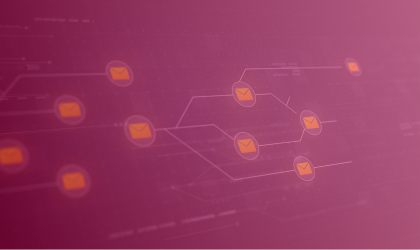Sending newsletters is still a widely used way of communicating with your audience. To keep it effective and up to date, you need to know all its secrets and good practices. Creative, useful and trustworthy, emailing is a powerful tool to discover your new products or to work on your image. Let’s see how to put all the chances on your side to succeed with your newsletters and to avoid the mistakes that slow down your readers’ engagement!
Newsletter definition
A brief history of email marketing
The first mass email was sent 13 years before the birth of the internet. It was through Arpanet that this type of communication started, with 400 recipients. The practice then multiplied, notably with the arrival of Hotmail’s free email service in 1996. Two years later, the word SPAM appeared, and a few years later the first laws to protect personal data were adopted in the United States.
Fun fact: the word spam comes from a Monty Python sketch.
Newsletter stats in B2C
- 4 out of 10 internet users buy online after receiving a commercial email.
- +26% opened emails with a personalized email subject.
- 75% of users read emails on mobile devices.
How to make a successful newsletter?
-
Define your goal
To send out a message, to show what’s new, to work on your image, the goals are multiple, and it is therefore necessary to define a single objective so that the message is clear for your readers.
-
Build your audience
This stage is particularly important on several levels. To begin with, this is the right time to think about the right recipient. For example, your customers and prospects may have different newsletters addressed to them. Secondly, you need to make sure that your database is clean: false email addresses or addresses that have been deleted are dangerous to your deliverability. Following on from this, this is also the stage at which you must ensure compliance with the GDPR and collect and keep your contacts’ consent.
Don’t forget to offer them an easy way to unsubscribe from your newsletter!
-
Set the tone
The editorial line of your newsletter is important. Your readers appreciate knowing “who” they are talking to through the brand you represent. Developing a precise tone makes it easier for them to identify you and therefore to open your emails more regularly!
-
Work on the content
As with the previous point, content is key to retain your contacts’ attention and build loyalty. The most important thing to remember is to send a precise message to the right contact. To do this, make sure you deliver a single message in your emails, or at least organize your emailing so that the different messages are clear at a glance!
-
Personalize
Personalization, particularly in the subject line, increases the open rate considerably. In addition to the form, the content should also be personalised: the city where the contact lives, and therefore the nearest shop, or his or her birthday, are all parameters that should be highlighted in your communications to establish a relationship of trust.
-
Be creative
Your contacts receive a considerable amount of newsletters every single day. To stand out, be creative! An email that will stand out in your contacts’ minds will have a better return and will ensure that your next communications are opened more often.
When to send a BtoC newsletter?
In BtoC, the majority of emails are opened on a mobile device. They are therefore consulted more regularly, and the time of sending has an increasingly important role in the opening rate of your communications. The best times can be A/B tested because they are specific to each company. Your persona has a big role to play in this statistic. The recommended time slots are therefore a general rule. However, we notice better results for newsletters sent out on Wednesdays between 9 and 11 am and on Thursdays between 8 and 10 am. Generally speaking, users also consult their mobiles in the mornings between 6am and 8am, between 12pm and 2pm and between 9pm and 11pm. On Wednesdays, there is also a peak between 4pm and 6pm, as well as on weekends between 9am and 3pm.

What are the differences between B2B and B2C emailing?
Sending an email to a BtoB or BtoC target is different. The limits of personalization are not the same, nor are the reading habits. It is therefore necessary to adapt the frequency of sending and the content. The involvement of readers is also different: in the workplace, the contact will be looking for information that will help him/her to achieve his/her professional objectives. In their personal lives, the contact’s aim is to solve a problem and emotions are a very important factor.
Read also: B2B newsletter: what you need to know
|
B2B |
B2C |
|
|
Content |
Different organized focuses |
Only one message |
|
Red thread |
Gain (time, money, result) |
Emotions |
|
Personalization |
Business sector, position |
City, dates |
You now have all the information you need to make your B2C emailing a success. To succeed in all these steps, it is important to have the necessary tools for timely sending, creation and personalization of your communications!






